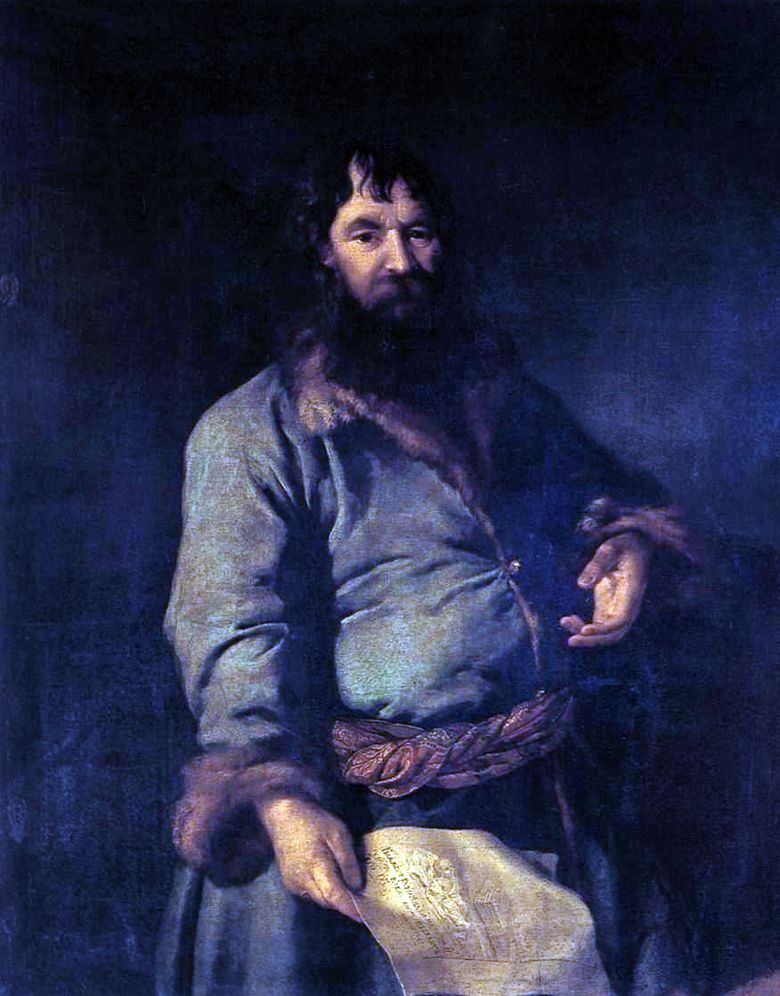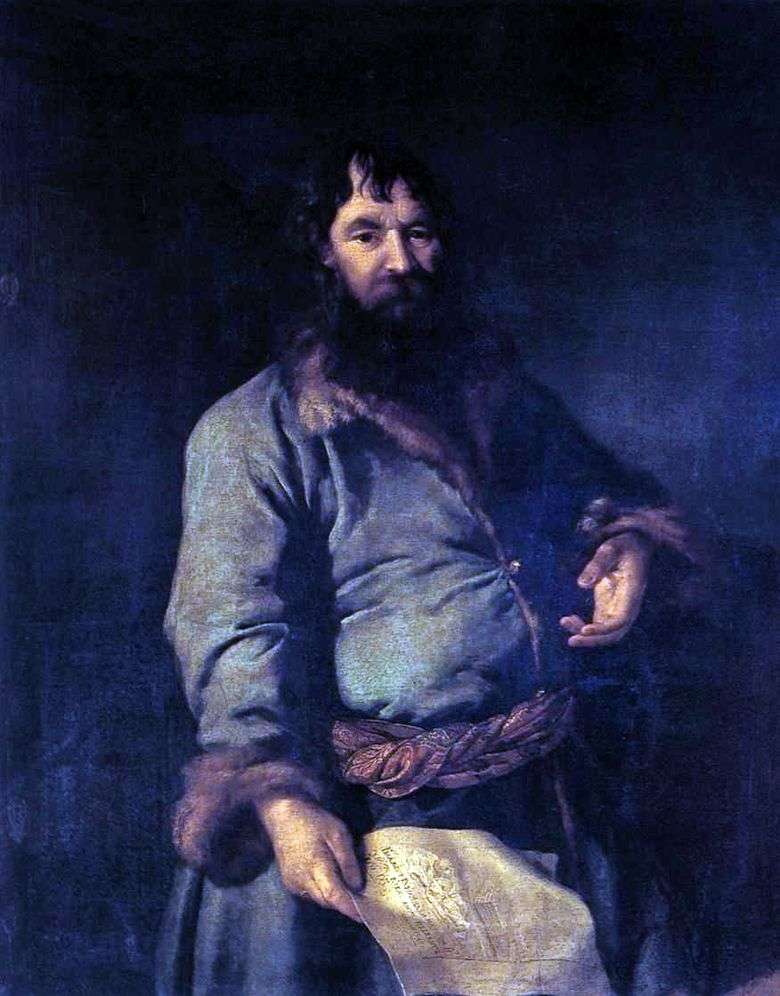
The order for the portrait of N. A. Sezemov came from the president of the Academy of Arts, I. I. Betsky, a confidant of Catherine II. Nikifor Artemyevich Sezemov was the richest wine farmer who made the millionth fortune. However, this enterprising businessman from the peasants remained a serf of Count Sheremetev.
Thanks to the large charitable donations made by him, N. A. Sezemov was awarded the honor title exceptional for a man: D. G. Levitsky wrote his portrait for the Moscow educational house, on the basis of which the farmer appropriated a huge amount of 14,788 rubles. In March 1771 the canvas was placed in the Council hall among other portraits of guardians and donors.
The work is a subscription, on the back of the picture there is a curious inscription, which characterizes the epoch of its creation and of the most depicted: “Human-loving Giver of the Village vykhina villager Nikifor Artemiev Sesomov 1770. To the Year”. N. A. Sezemov is an outstanding personality for the Russian culture of Catherine’s reign. He was a peculiar and colorful person with a remarkable character and unusual fate. The work of Levitsky is interesting in the appearance in the history of Russian portraitism of the character “from simple” and even more so from “peasants of serfdom”. In this you can see the sign of strengthening educational trends in Russian society.
In the portrait, psychological expressiveness is combined with the representativeness of the image, which was due to the official character of the order. The appearance of the character, it seemed, was not enough for this. But the talent of the painter helped to overcome difficulties; moreover, the written character received a special urgency from the combination of incompatible, at first glance, signs. The overweight male figure of a millionaire from serfs with a rustic face, overgrown with a black beard, in a simple dim caftan, girded with a sash, gained a certain solemnity in the portrait. To understand the portrait, it is important to understand its composition. With one hand, Sezemov holds a sheet, and the other points to it.
The sheet depicts the Moscow educational home and the swaddled rootless baby. Here is the corresponding text from the psalm: “Blessed is that you are poor and miserable, on the day the Lord will deliver him.” Such a composition is traditional for Russian parade portraits of the second half of the 18th century. The model should be an indispensable conditional gesture to indicate a certain object that is significant in its social activities. When writing a portrait Levitsky sparingly used visual tools. A large figure of a rich donor is highlighted on a dark-blue monophonic background with a light-shadow game.
 Portrait de N. A. Sezamov – Dmitry Levitsky
Portrait de N. A. Sezamov – Dmitry Levitsky Retrato de N. A. Sezamov – Dmitry Levitsky
Retrato de N. A. Sezamov – Dmitry Levitsky Portrait of P. A. Demidov by Dmitry Levitsky
Portrait of P. A. Demidov by Dmitry Levitsky Portrait of the priest Peter Levitsky by Dmitry Levitsky
Portrait of the priest Peter Levitsky by Dmitry Levitsky Portrait of Glafira Ivanovna Alymova by Dmitry Levitsky
Portrait of Glafira Ivanovna Alymova by Dmitry Levitsky Portrait of G. Levitsky. K (father of the artist) by Dmitry Levitsky
Portrait of G. Levitsky. K (father of the artist) by Dmitry Levitsky Portrait of A. Ya. Levitskaya by Dmitry Levitsky
Portrait of A. Ya. Levitskaya by Dmitry Levitsky Portrait of D. Didro by Dmitry Levitsky
Portrait of D. Didro by Dmitry Levitsky